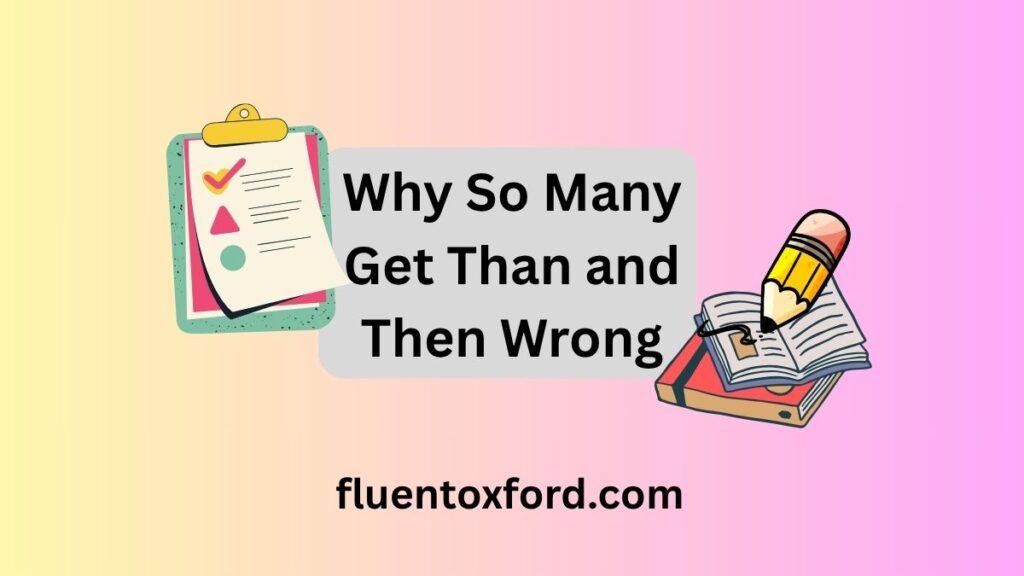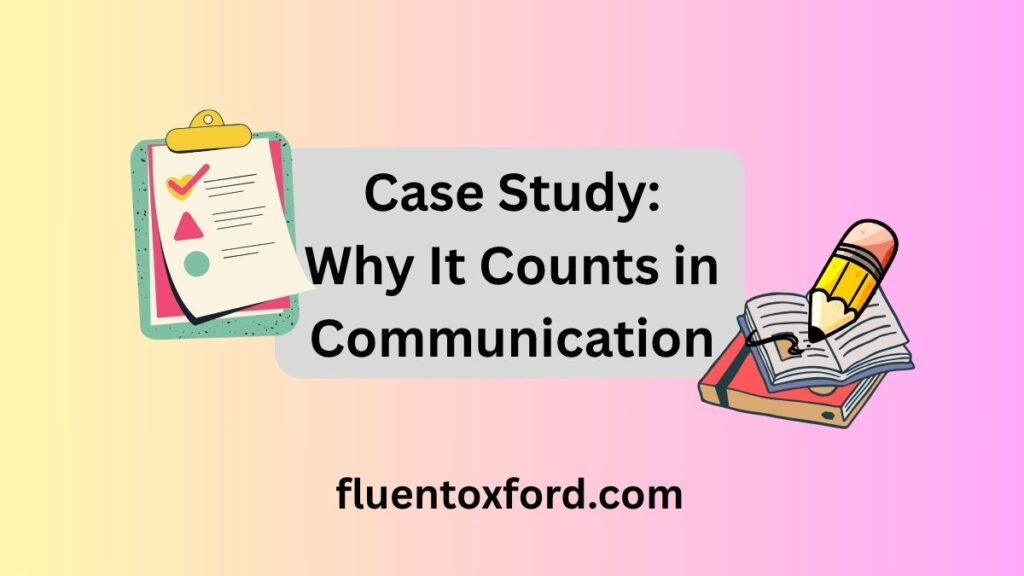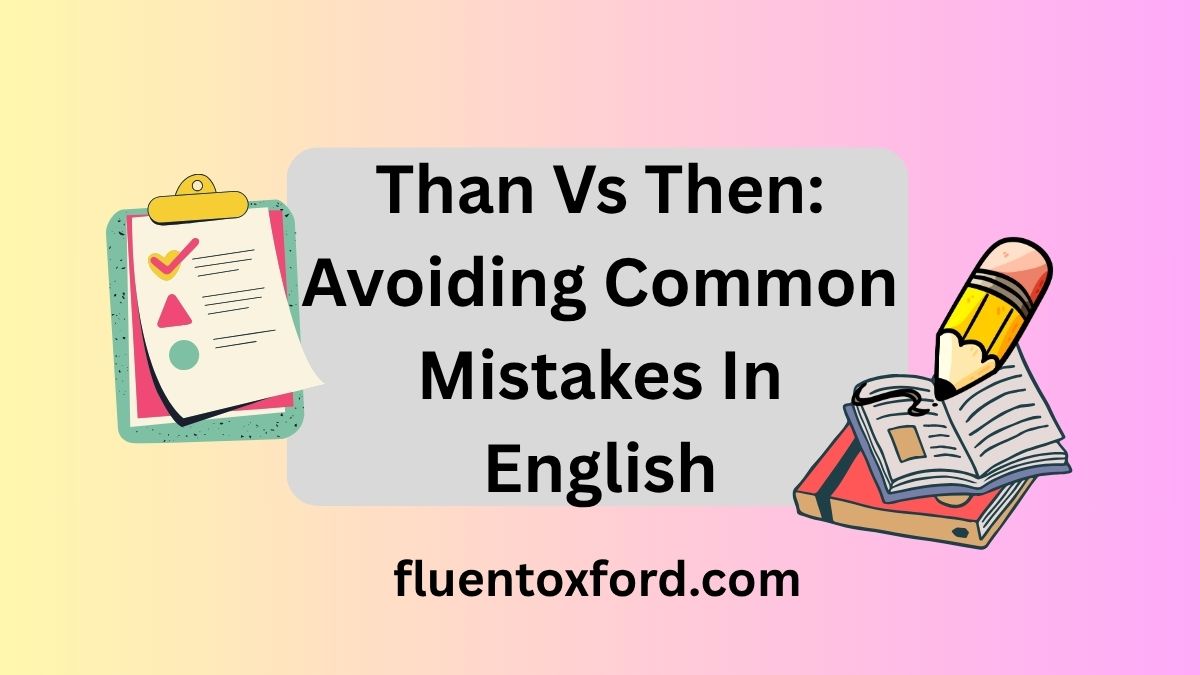“Than” vs. “Then”: Avoiding Common Mistakes focuses on helping English learners and writers distinguish between two frequently confused words. “Than” is a conjunction used to make comparisons, while “then” is an adverb that typically denotes time or sequence. Although these two words may look and sound nearly identical, understanding their proper usage is crucial for clear and effective communication in both writing and speaking.
Getting it right can be a game-changer. Than vs. Then: Avoiding common mistakes isn’t just about grammar; it’s about making sure your messages come across exactly the way you intended. Small slips can affect your credibility and confuse your readers, turning a strong sentence into a weak one in an instant. Mastering these distinctions lets you express your thoughts accurately and confidently.
With Than vs. Then: Avoiding Common Mistakes, you’ll learn the simple rules, helpful tricks, and real-world examples to avoid confusion once and for all. Whether you’re a student, a professional, or someone who wants to improve their writing skills, understanding these subtleties will help you communicate more effectively and make a powerful, polished impression.
Why So Many Get Than and Then Wrong

It’s not hard to see why homophone confusion happens. The words “than” and “then” are nearly identical in spelling—just a single letter differentiates them—and their pronunciations are very close in many varieties of English. Naturally, this makes their proper usage confusing, particularly in casual writing.
This confusion is more pronounced when we:
- Type quickly and rely on muscle memory
- Say the words in a sentence without thinking much about their role
- Forget their grammatical distinctions, ignoring their context—comparison vs. sequence—which is key to choosing the right word
Than Explained (Comparison)
So when to use “than”?
Simply put, “than” is a comparative conjunction. It shows comparison or contrast—it’s a tool we use when we want to say something is more or less than something else.
✅ Examples:
- She is taller than her brother.
- He runs faster than me.
- There are more cookies in this jar than in that one.
Tips to Remember:
➥ If you’re comparing, use than.
➥ Try this trick: “compARe” and “thAn” both have an “A”—comparison starts with A.
Then Explained (Time or Sequence)
So when to use then?
Then is an adverb of time or order. It shows something that comes afterwards, whether in time or in a sequence of events.
✅ Examples:
- First we went to the grocery store, then we walked home.
- If you submit your application, then you’ll hear back in a few days.
- He finished his homework, and then he played video games.
Tips to Remember:
➥ If you’re talking about time or order, use “then.”
➥ “timE” or “ordEr”—both have an “E”—just like then.
Than vs Then: Side-by-Side Examples
To visualize this, here’s a handy comparison table:
| Than | Then | |
| Meaning | comparison | time or sequence |
| Examples | taller than, cheaper than | first… then, back then |
| Trick | “compARe” | “timE or ordEr” |
| Part of Speech | conjunction | adverb |
| Question | Is it comparing two things? | Is it about when or what comes next? |
Common Mistakes and How to Avoid Them

Here are a few common mistakes people make with “than” vs. “then” and how you can avoid them:
❌ Incorrect: She is more smarter then me.
✅ Correct: She is smarter than I.
❌ Incorrect: If you do it quickly than we can leave.
✅ Correct: If you do it quickly, then we can leave.
Other Than vs Other Then
Here’s another confusing pair you might come across:
✅ Other than: Exception or exclusion.
➥ Example: I like all fruits other than bananas.
❌ “Other then”— this isn’t a standard English expression.
➥ So you should always use “other than.”
More Than vs More Then
This is a very frequently confused pair.
✅ More than: To show a greater amount.
➥ Example: There are more than 20 people at the party.
❌ “More then”— this is a mistake; it should be “more than.”
Rather Than vs Rather Then
This is another context where confusion occurs.
✅ Rather than: To show preference or choice.
➥ Example: I’d stay home rather than go out.
❌ “Rather then”— this isn’t proper English; it should be “rather than.”
Etymology (Brief and Interesting Background)
Let’s take a short trip back in time.
Both than and then come from Old English.
Originally:
- Than (or “ðan”) was a comparative conjunction, used to draw comparisons.
- Then (or “ðonne”) was an adverb of time, indicating next or afterwards.
This shows us the two words were related — a kind of linguistic “cousins”— which explains their close form — but their meanings diverged over time.
Etymology of “Than”
The word “than” traces back to Old English “ðanne” or “ðon” (pronounced “thanne”) — a form used to draw comparisons. It originally meant “than, when, or in comparison to.”
This form came from Proto-Germanic “*thana” or “*than”, a word that meant “than” or “in comparison.” It’s a linguistic sibling of Old Saxon “thanne” and Old High German “thanne”—all of which performed a similar comparative role in their respective languages.
Originally, “than” and “then” were used interchangeably in Old English, which is a big part of the confusion we have today. It wasn’t until the 1700s that grammarians decided to separate their meanings, making “than” a conjunction for comparison and “then” an adverb for time or sequence.
Etymology of “Then”
The word “then” also comes from Old English—“ðonne” or “ðanne”—which meant “at that time, afterwards, or subsequently.”
This form traces back to Proto-Germanic “*thana,” a temporal adverb. It’s related to Old Saxon “thanna” and Old High German “thanne”— all variants of a word that meant “then” or “at that time.”
Originally, there was little distinction between “then” and “than”— both were variants of the same form. But as English evolves, the two diverged in spelling and usage to clarify their roles in a sentence.
Summary (Key Takeaways)
Here’s a clear snapshot of what we’ve covered:
✅ Than:
➥ Shows comparison or contrast
➥ We use it to say “more than, less than, taller than…”
➥ Trick: “compARe”
✅ Then:
➥ Shows time or sequence
➥ We use it to say “first… then, back then, and then…”
➥ Trick: “timE or ordEr”
Final Tip
If you’re unsure, ask yourself:
➥ Are you comparing two things or people? → Than
➥ Are you talking about what happens afterwards or in a sequence? → Then
Why It Matters (Writing Clarity)
Using than vs. then correctly isn’t about pleasing grammar nerds—it’s about making sure your messages are clear. If you confuse these words, your sentence might confuse your readers, undermine your credibility, or affect your professional writing.
Picture this:
➥ Incorrect: “I’d rather then stay home.”
➥ Correct: “I’d rather than stay home.”
This tiny change transforms a confusing sentence into a clear, purposeful expression of preference.
Case Study: Why It Counts in Communication

Sarah, a marketing manager, was sending a proposal to a potential client.
She meant to say:
✅ “Our pricing is more reasonable than our competitor’s.”
Instead, she wrote:
❌ “Our pricing is more reasonable then our competitor’s.”
The client was confused and questioned her attention to detail.
This small typo made her seem less professional—a perfect example of how tiny mistakes can undermine credibility.
Final Thoughts
Getting a handle on “than” vs. “then” makes your writing clearer, more polished, and more reliable. It shows you care about your communication and that you pay attention to detail—qualities that reflect well on you, whether you’re composing a business proposal, writing an essay, or simply sending a text.
Cheat Sheet (Save or Screenshot)
| Than | Then | |
| Meaning | comparison | time or sequence |
| Examples | taller than, cheaper than | First… then, back then |
| Trick | compARe | timE or ordEr |
| Part of Speech | conjunction | adverb |
| Question | Is it comparing two things? | Is it about when or what comes next? |
✅ Tip: Keep this handy cheat sheet nearby when you’re writing. It’s a small tool that can make a huge difference in your clarity and confidence.
Conclusion
Than vs. Then: Avoiding Common Mistakes is all about making sure you use these two words in the right way. It may seem small, but choosing the wrong word can confuse your readers. When you know the difference, your writing becomes clear and easy to follow.
With Than vs. Then: Avoiding Common Mistakes, you can avoid those simple errors in your messages, emails, or stories. It helps you show that you care about your writing. So remember, “than” is for comparisons and “then” is for time or order. Keep these easy rules in mind, and your writing will become much more polished and natural.
FAQ
1️⃣ What’s the main difference between than and then?
✅ “Than” is for comparison (more than, taller than), while “then” is for time or sequence (first… then).
2️⃣ Why do people confuse than and then?
✅ They’re homophones—words that sound nearly the same but have different meanings and spellings—which makes confusion very easy.
3️⃣ Are there any tricks to remember which is which?
✅ Yes! If you’re comparing, use than (compARe). If you’re talking about time or order, use “then” (timE).
4️⃣ Is it a big deal if I mix them up?
✅ It can affect your clarity and credibility, especially in professional writing, although everyone slips up sometimes.
5️⃣ Are “than” and “then” interchangeable?
✅ No—they serve different roles in a sentence, and swapping them can confuse your readers.

As an admin at Fluent Oxford, Maida Queen is the driving force behind our vibrant learning community. With a deep passion for English language education, she ensures that our platform remains a dynamic, engaging, and supportive space for learners worldwide.
Maida expertly manages content, assists users with their grammar and fluency queries, and fosters an interactive environment where learning feels effortless and enjoyable. Whether you need guidance, motivation, or just a friendly face in the Fluent Oxford community, Maida is always there to help you reach your English language goals.








